Action Potentials and Conductance
1/44
There's no tags or description
Looks like no tags are added yet.
Name | Mastery | Learn | Test | Matching | Spaced |
|---|
No study sessions yet.
45 Terms
The neuron is designed to carry messages for one area in the body to another. All neurons have:
a soma, or cell body
an axon (long extension of the cell)
(most also have) dendrites

The neuronal messages are ________ in nature and occur where?
electrical; at the membrane surfaces.
what are leak channels?
always open for K and Na in the resting cell
responsible for the resting potential
what are gated channels?
channels that can exist in either an open or closed state (2 types)
what are the 2 types of gated channels that are important in neurons?
voltage-gated: channels open or close when the membrane charge (voltage) changes
ligand-gated: open when ligand (chemical substance) binds to channel)
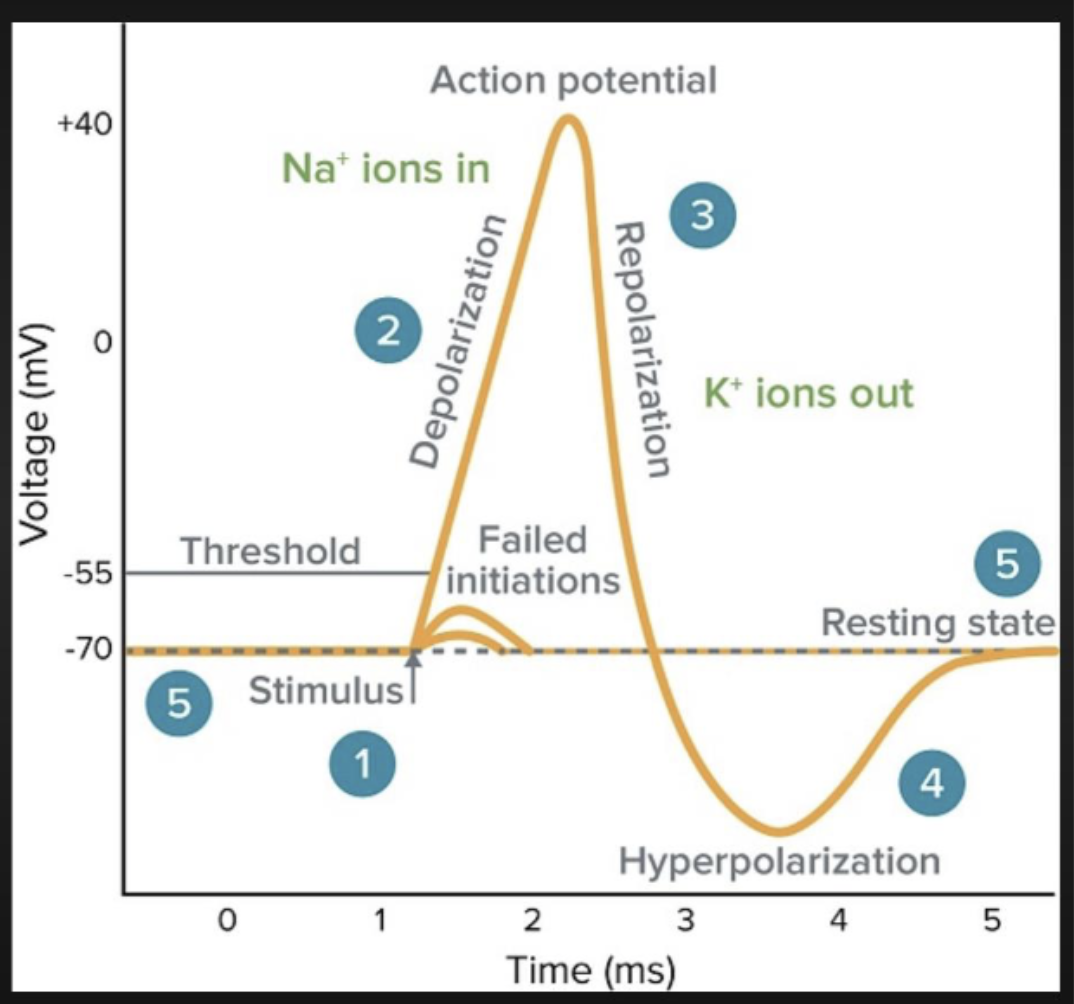
what happens during stimulation?
Stimulation of a resting neuron creates a disruption in the membrane that results in the opening of voltage-gated channels for Na+
sodium enters cell causing membrane potential to move toward E-Na
stronger stimulus depolarizes membrane to a threshold voltage to generate an action potential
what are the steps in generating an action potential
stimulus reaches threshold voltage (typically -50-55 mV)
depolarization (Na+ ions in)
repolarization (K+ ions out)
hyperpolarization
resting state
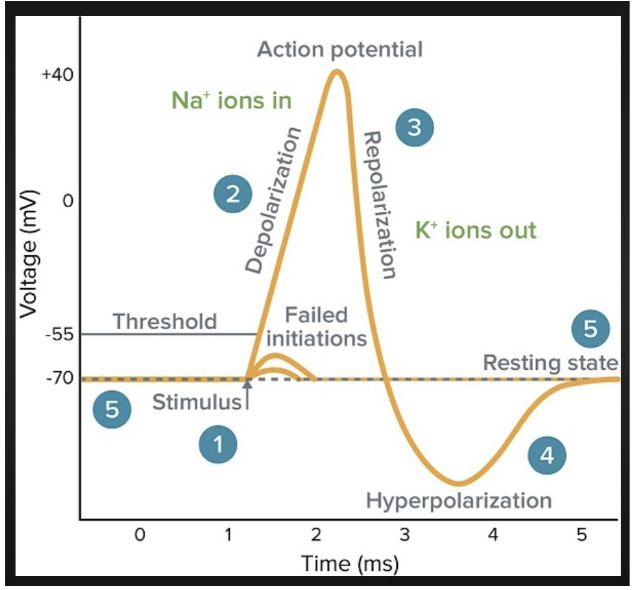
what is depolarization?
Any change that moves the membrane potential closer to 0
threshold voltage is typically around what voltage?
-50-55 mV
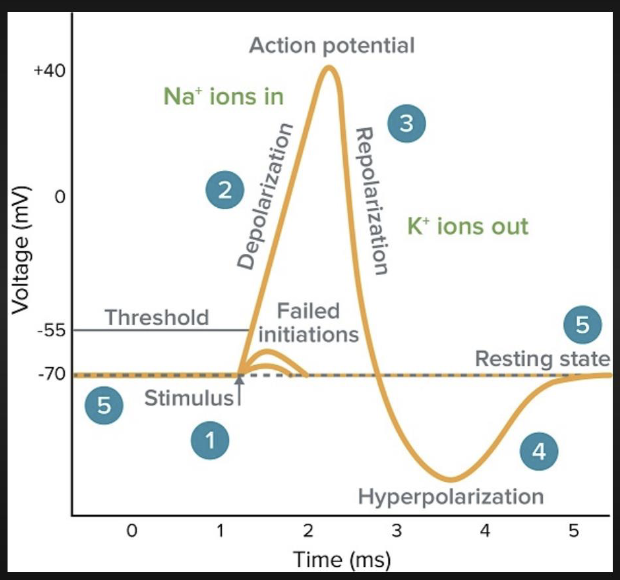
Stimulation of a resting neuron creates a disruption in the membrane that results in
the opening of voltage-gated channels for Na+
what is an action potential caused by?
rapid inward flux of Na+ ions through voltage-gated channels that:
depolarizes membrane to 0 as incoming Na+ first neutralizes K+ that was on resting membrane
establish (+) charge on interior of membrane (overshoot) which peaks at +30-50 mV
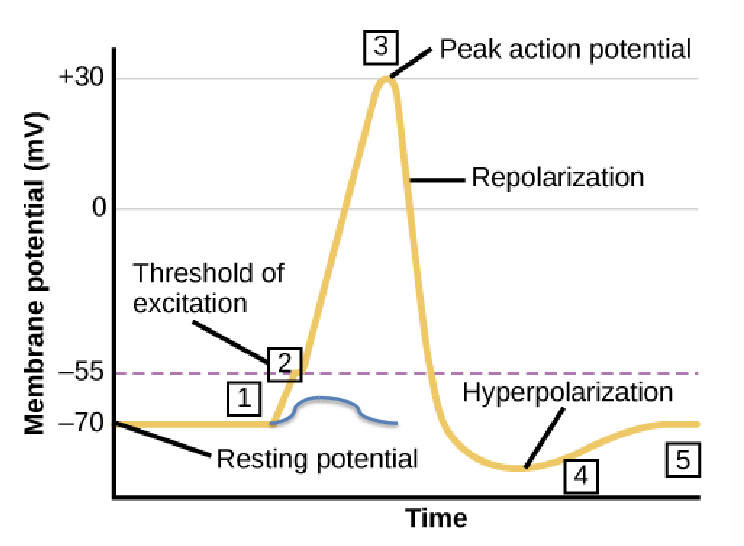
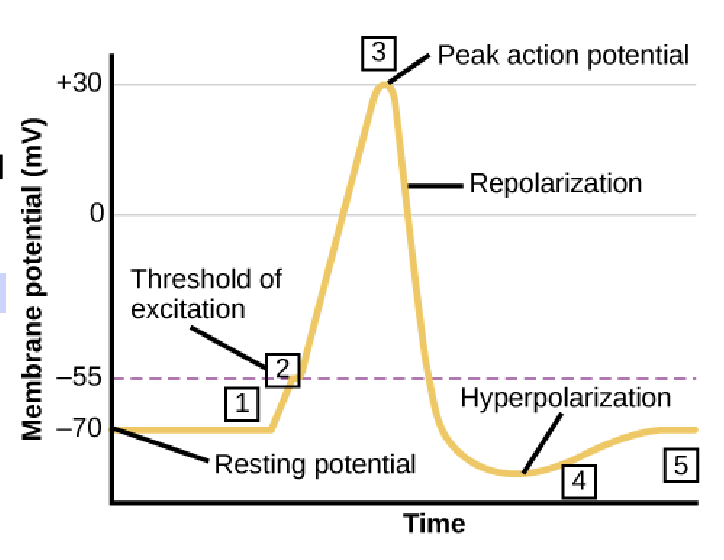
why does hyperpolarization occur?
Because not all of the K+ voltage gated channels close in time, the potential becomes more negative than the normal resting potential
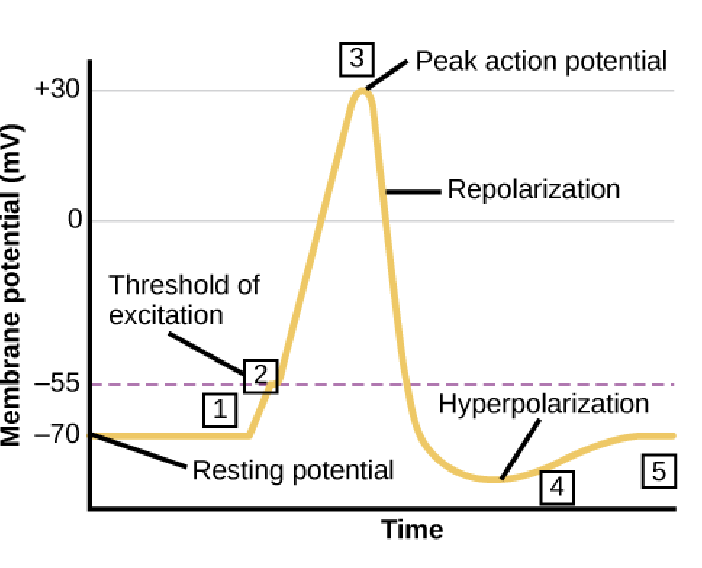
why does repolarization occur?
inward flux of Na+ ions stops as Na+ voltage-gated channels close.
Outward flux of K+ ions occurs as K+ voltage-gated channels open
membrane goes back ot original resting potential

when do Na+ channels close vs K+ channels during repolarization?
occurs sequentially (not all at the same time) during depolarization and repolarization
Na+ channels close at peak of action potential while K+ channels close throughout repolarization
Na+ channels open before the K+ channels open even though both are triggered by the same threshold level stimulus
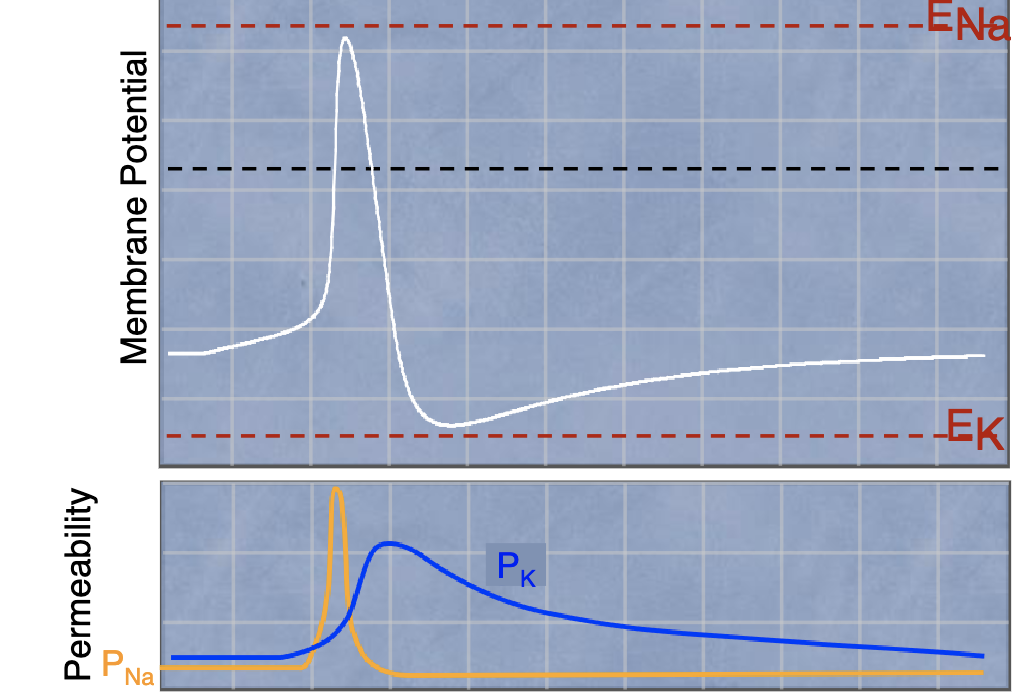
what is action potential shape determined by ?
the different voltage- & time-dependent gating properties of Na+ and K+ channels
what is the opening voltage for Na+ and K+ channels called?
threshold voltage
what is the average closing voltage for Na+ and K+ channels?
Na+ channels → action potential peak
K+ channels → resting potential
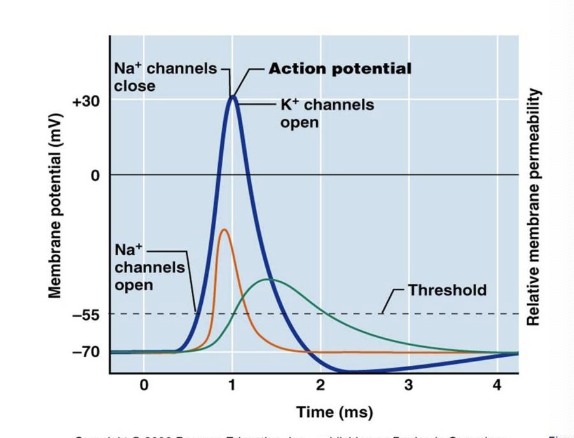
what are characteristics of an action potential?
all or non principle
absolute refractory period
relative refractory period
what is the all or none principle of action potentials?
once threshold is reached, an action potential reaches full amplitude
what is the absolute refractory period of an action potential?
the time during which it is impossible to generate a second action potential
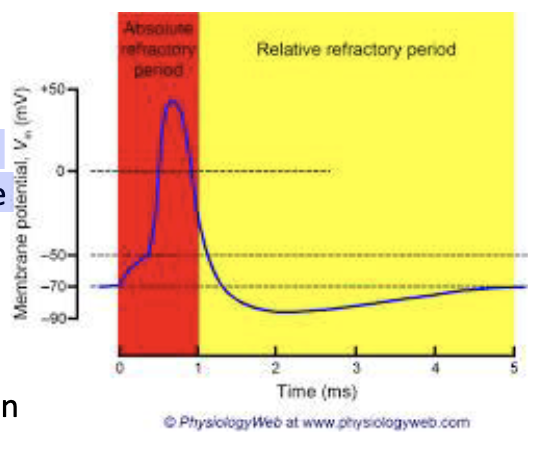
what is the relative refractory period of an action potential?
the time during which a second action potential can be generated but would require a stronger stimulus to reach threshold

what is the molecular mechanism of the absolute refractory period?
sodium channel inactivation
close to inactivated state (cannot be reopened)
takes 2-3 msecs to relax to closed state (can be reopened)
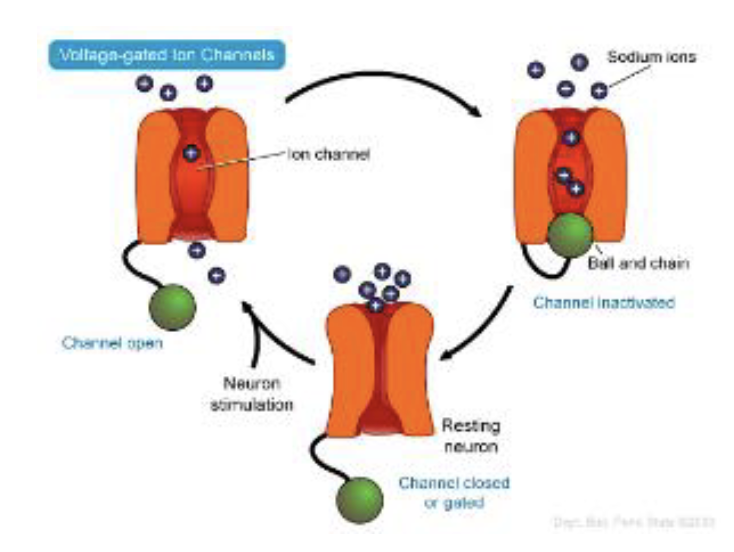
how do local anesthetics block action potentials?
Local anesthetics are hydrophobic amines (for example lidocaine) that act at a defined site on Na+ channels and lock the channel in its inactive conformation
after Na+ channel reactivation, it is possible to generate another action potential, but a smaller/larger stimulus is necessary to open enough Na+ channels to override the efflux of K+ whose permeability is still above the resting state
larger
such an action potential will have a reduced amplitude since the influx of Na+ is partially counteracted by the K+ efflux. The amplitude will return to normal when voltage gated K+ channels have completely closed
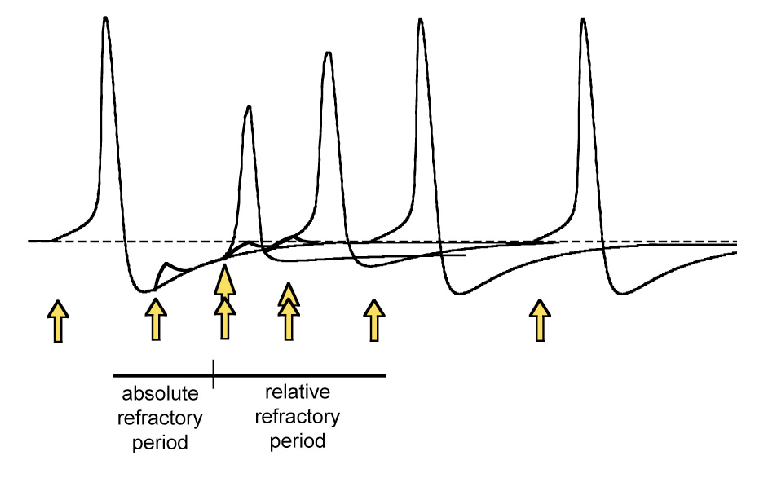
V-gated Na+ channels produce what kind of current?
V-gated K+ channels produce what kind of current
V-gated Na+ channels produce regenerative inward current;
V-gated K+ channels produce repolarizing outward current
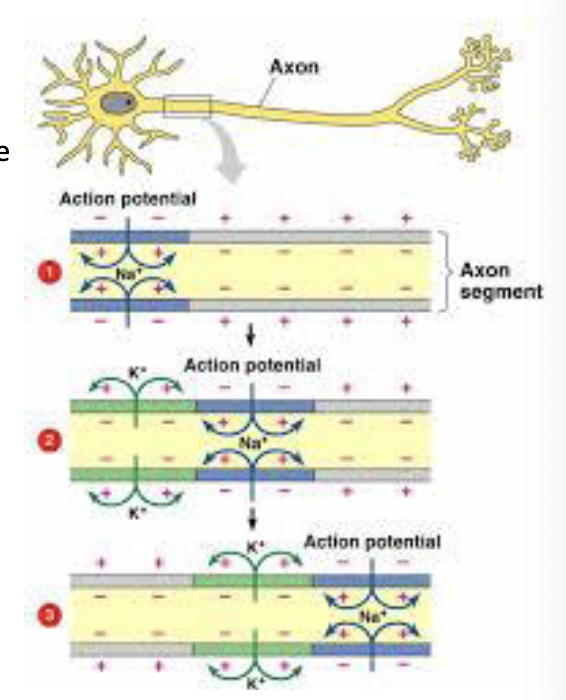
describe how action potentials are conducted along an axon.
cell stimulated on left end of axon causes influx of Na+ ions making inside of membrane (+) in that segment of axon
due to local concentration of Na+ in this region, Na+ will diffuse laterally along the inside of membrane
neutralize inside negative charge in adjacent segment of axon to raise threshold potential, intiiating action potential in next segment (blue)
outward flux of K+ is repolarizing the originally stimulated segment (green)
newly generated action potential spreads to next segment to depolarize it
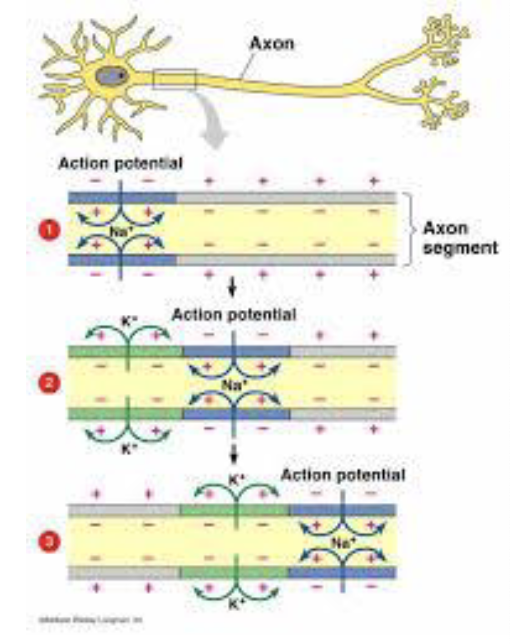
the action potential spreads down the axon in segments of the membrane- essentially a new action potential is generated in each segment of the axon – this is referred to as
regenerative current

This type of conduction is called
cable conduction.
unidirectional movement of action potentials is due to…?
refractory period
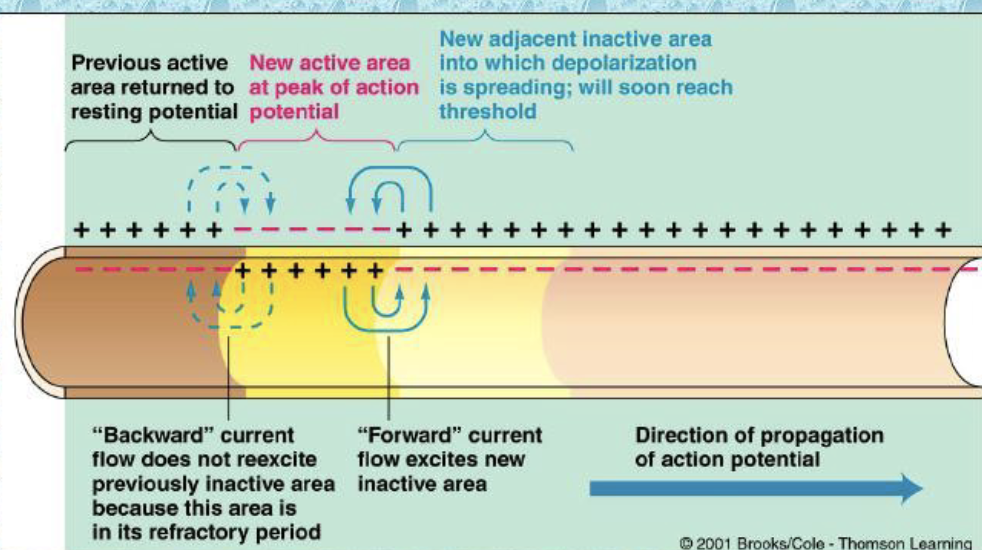
many neurons in both peripheral and central nervous systems have their axons covered by
myelin sheath
myelin sheaths are discontinuous and are separated by areas of bare axonal membrane called
nodes of Ranvier
what do myelin sheaths and Nodes of Ranvier do?
myelin sheath acts as insulators of axon (like rubber on a lamp cord)
Nodes of Ranvier are the only places where Na+ and K+ current can flow through membrane
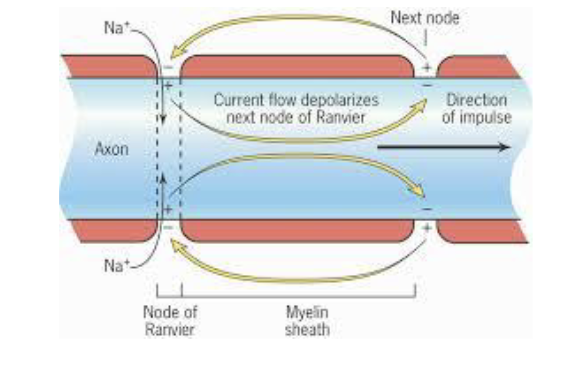
Because of the insulating character of the myelin sheaths, how do action potentials move? this is called…?
action potential “jumps” from node to node
saltatory conduction
the speed at which neurons conduct action potentials is called…?
conduction velocities
Conduction velocity is a function of
how far the injected sodium current can travel down the axon and still be at an amplitude above threshold
what type of disease is multiple scleorosis?
demyelinating disease

describe the mechanism of multiple sclerosis (demyelinating disease)
• removal of myelin sheath exposes the underlying membrane which lacks vg-Na+channels, but has many vg-K+ channels. the nodes still retain vg-Na+ channels
• The inward Na+ current at the nodes is dissipated in the demyelinated region by the outward K+ current which prevents the depolarization from reaching the Na+ channels in the next node
• demyelination promotes conduction failure which becomes progressively worse as more sheaths degenerate.
what happens to a leaky membrane during passive propagation?
leaky membrane loses current as potential spreads passively down fiber
leakier cell → spread of potential becomes limited

what quantifies the distance that a graded electrical potential can travel passively down an axon – before it decays to ~ 37% of its original amplitude?
length constant
formula for length constant
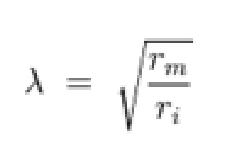
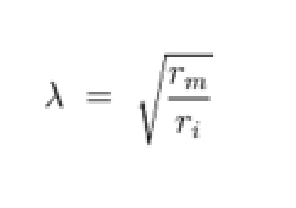
what is rm and ri in length constant formula?
rm = resistance to ion current through the membrane
ri = resistance to ion flow in the axoplasm; viz axial resistance
the ionic current injected into the axon will follow what path?
path of least resistance
what does a low ri and/or high rm lead to?
greater length constant
axon will depolarize to thershold further down from where injection occurs
increase in conduction velocity in neuron
length constant is a function of
axon diameter (larger axons have lower axial resistance ri)
myelination (myelin sheath raise the rm)
conduction velocities range from…?
< 0.5 m/s to >120m/s